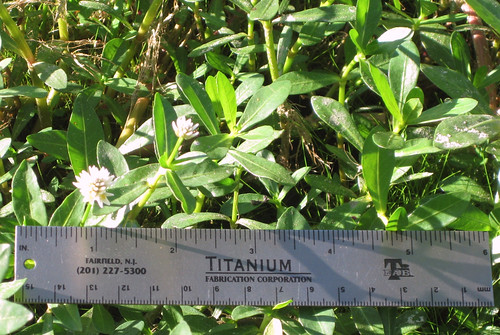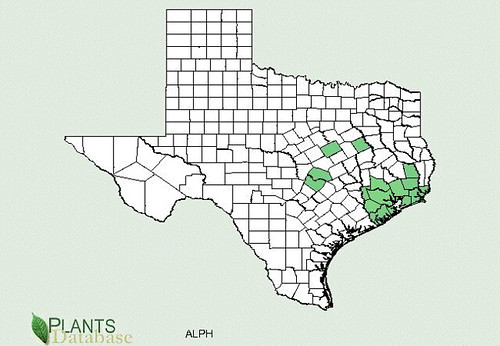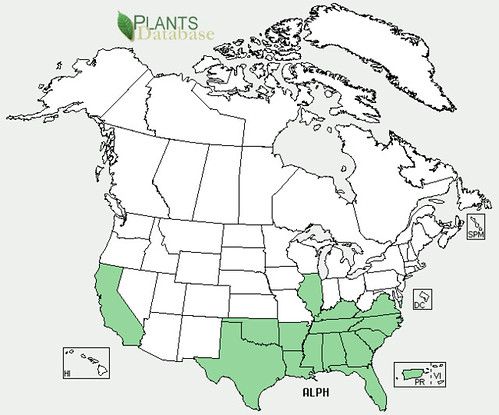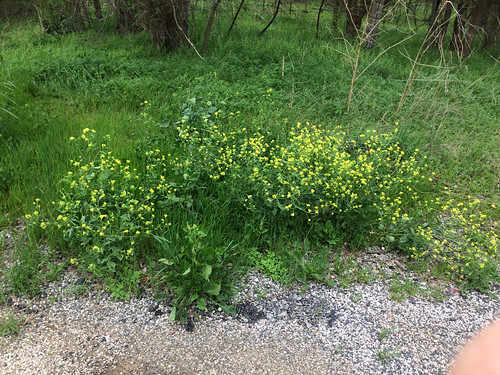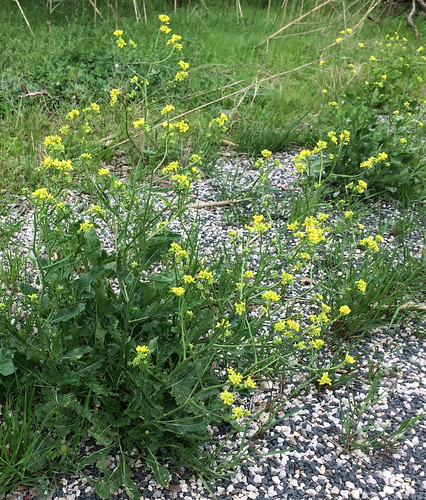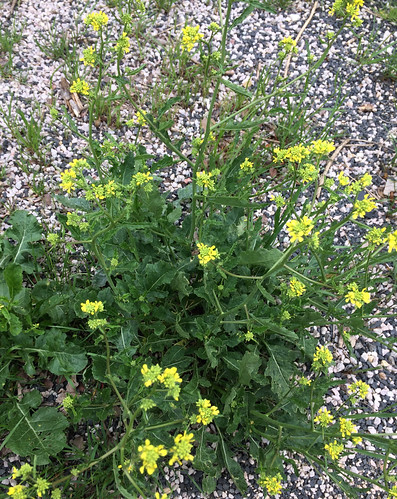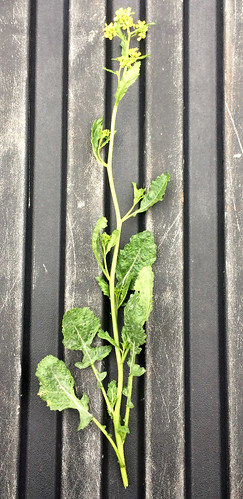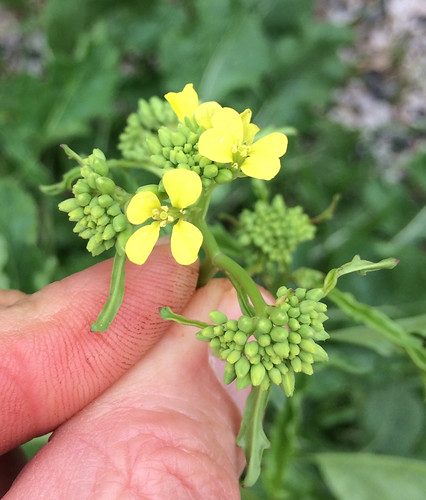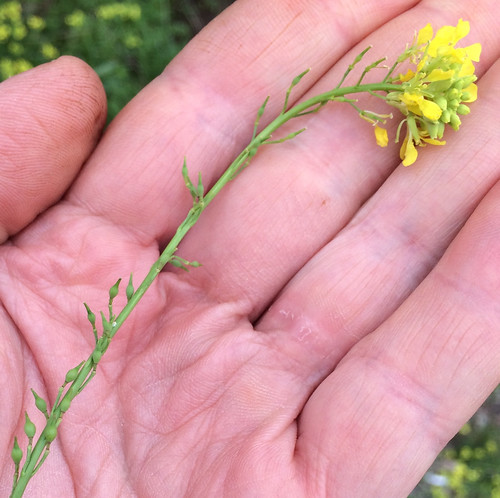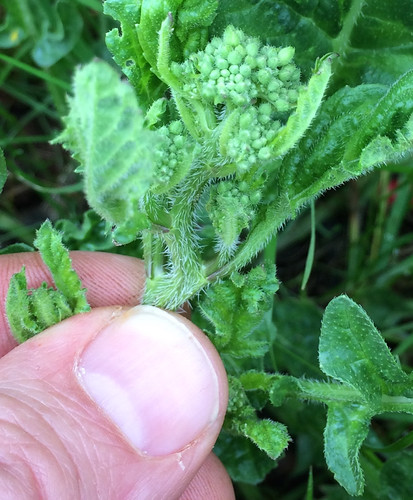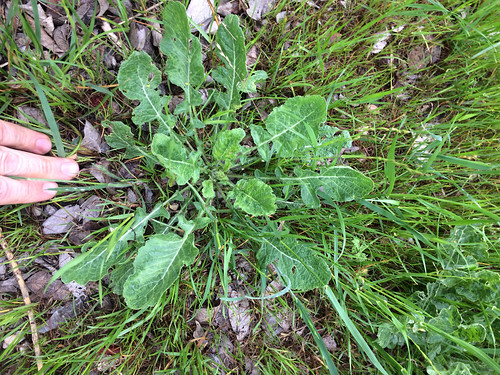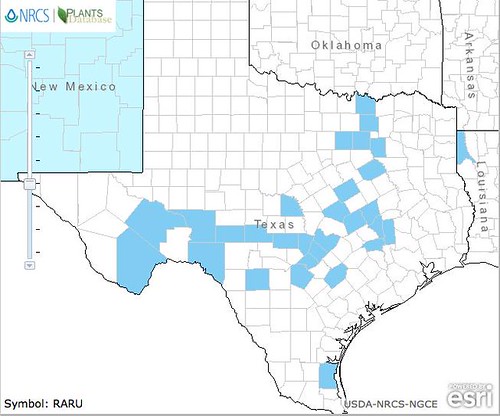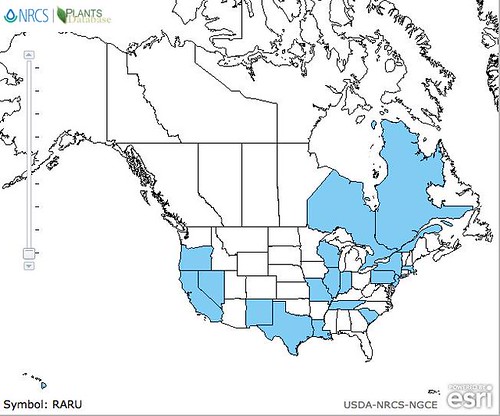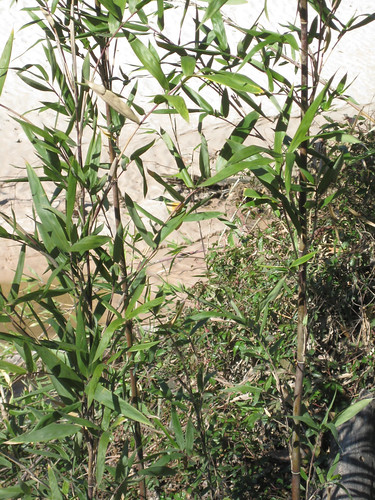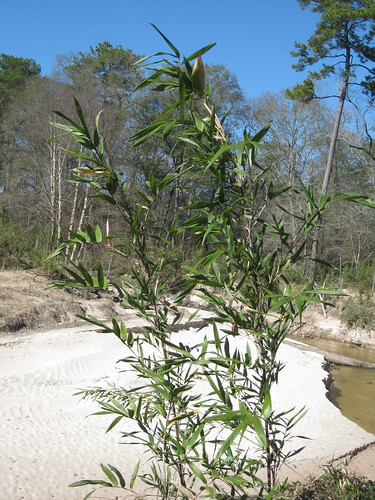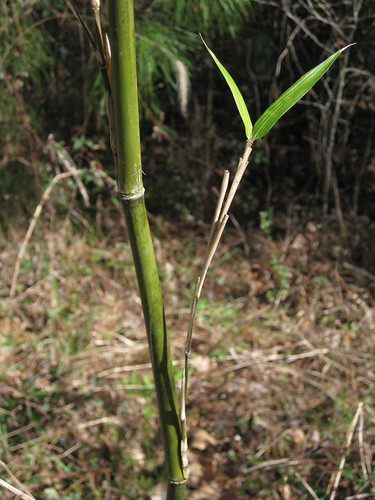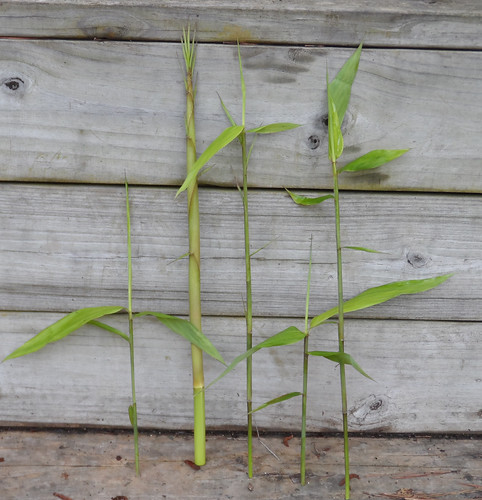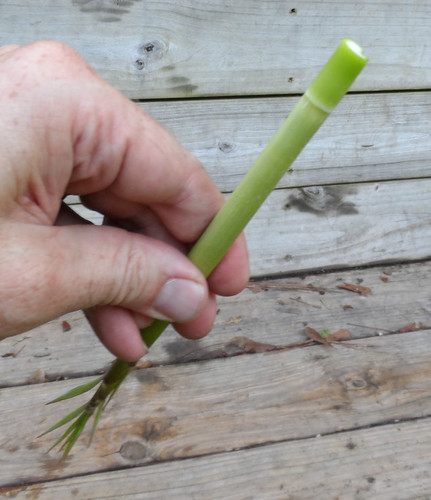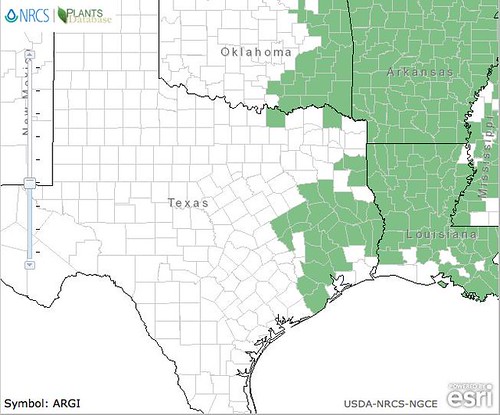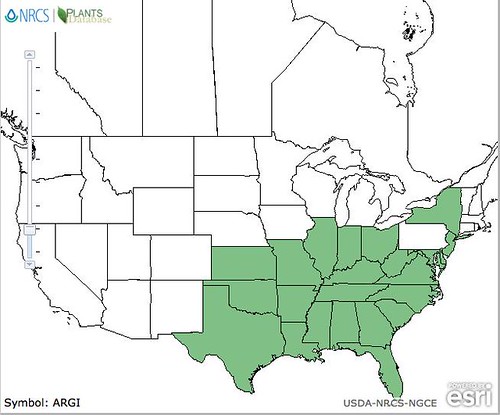Scientific Name(s): Maranta spp. and Sagittaria spp.
Abundance: uncommon
What: tubers, young leaves, young flower stalks
How: boiled, roasted
Where: marshes, water
When: tubers all year, best in late fall and early winter; young leaves in early summer; flower stalks well before flower buds have opened.
Nutritional Value: carbohydrates
Dangers: Beware the similar-looking arrow arum, (Peltandra virginica) plant which has an arrowhead-shaped leaf and produces tubers same as Sagittaria species.
Leaf Arrangement: The leaves are alternately arranged along the stem, typically emerging from the water or mud.
Leaf Shape: Arrowhead-shaped (sagittate), measuring 4 to 12 inches long and 2 to 6 inches wide.
Leaf Venation: Venation is palmate, looking like a spider, starting at where the stalk meets the leaf and branching out to the edges of the leaf.
Leaf Margin: Margins are smooth and entire.
Leaf Color: The leaves are generally a glossy green, sometimes with a slightly bluish hue.
Flower Structure: The flowers are arranged in whorls on a spike, with each flower having three white petals and three green sepals.
Flower Color: White, often with a yellowish center.
Fruit: Produces small, round, green fruits that turn brown as they mature.
Seed: Seeds are small, numerous, and contained within the fruit.
Stem: Stems are long, thick, and can be either submerged or emergent, depending on the water level.
Hairs: There are no hairs; both the stems and leaves are smooth.
Height: The emergent stems and leaves can reach 2 to 3 feet in height above the water surface.
Arrowroot tuber (photo courtesy of
Samuel Thayer).
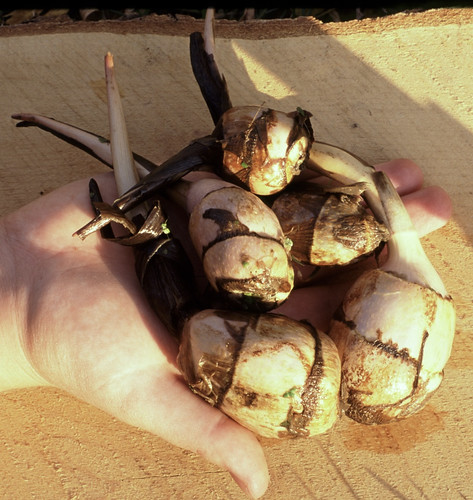
Arrowroot plants have many long veins radiating outwards from the center (palmate).
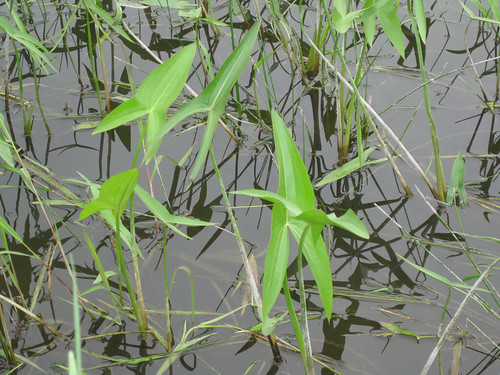
Arrowroot leaf and flower stalk with white flowers and unopened buds.
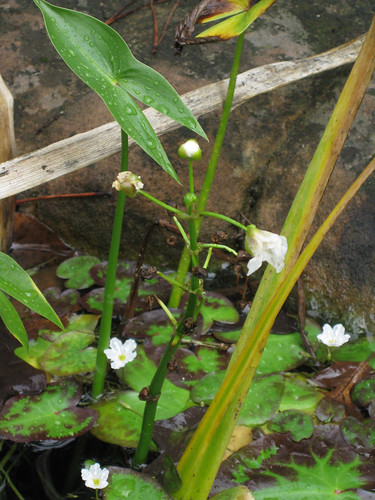
Note the spider-like (palmate) pattern of veins in the arrowhead-shaped leaves.
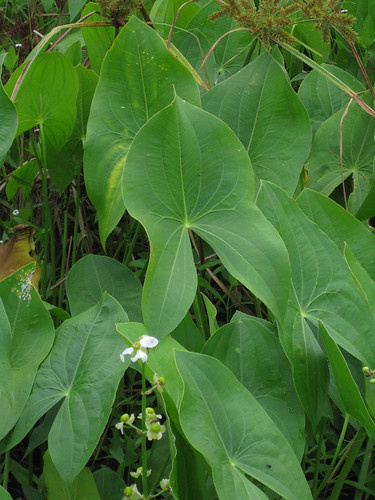
A stand of wapato plants.
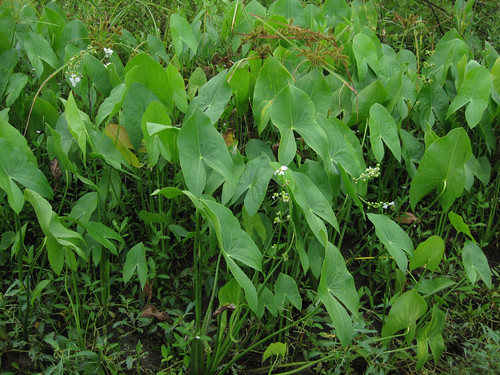
Close-up of wapato flowers.

Arrowroot seedpods in the fall. One pod forms for each flower.
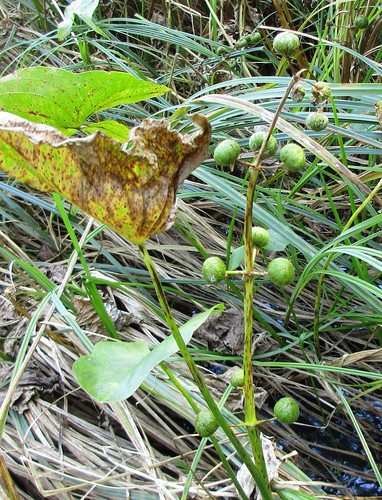
Texas distribution, attributed to U. S. Department of Agriculture. The marked counties are guidelines only. Plants may appear in other counties, especially if used in landscaping.

North American distribution, attributed to U. S. Department of Agriculture.
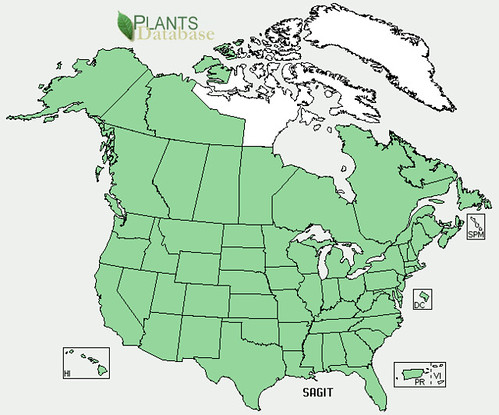
Found in marshes, rivers, lakes and ponds, the arrowhead plant’s distinctive leaf and flowers are easy to spot. Most arrowhead plants have three-pointed leaves shape like an arrowhead, with either the top point bigger and broader than or the same as the two downward pointing points. The vein pattern in the leaves of Sagittaria species is palmate, which means the leaves have numerous thick veins running from the stem out to the tips and sides. This pamate venation is important to distinguish the edible Sagittaria from toxic Arum species.
Traditionally arrowroot tubers are freed from the mud by tearing them from the roots while walking barefoot in the water. The tubers float to the surface where the can be collected. They are prepared for eating by first peeling the bitter outer skin, followed by cooking any way you would cook a potato. The young leaves are harvested and boiled before they've had a chance to unroll/unfurl. The flower stalk is cooked like asparagus but it must be harvested before its flower buds have opened. Note, any plants harvested from water must be cooked to avoid imbibing any toxic pathogens.
Note that arrowhead tubers do not store very well, unlike traditional potatoes. If you want to keep them make sure you are storing only perfect, undamaged tubers and place them in moist, clean sand in a cool, dark place.
Young, still curled leaves that are either above or below the surface of the water make an excellent cooked green. Treat them like spinach. The young flower stalk before the flower buds appear can be used in the same manner as the leaves.
TOXIC MIMIC: ARROW ARUM PLANT
Arrow arum plants (Peltandra virginica) grow in wetlands, and have a leaves-with the same arrowhead-shape as the edible Sagittaria, as well as similar tubers. All parts of the arum plants are filled with calcium oxalate which will cause painful burning sensations in the lips, mouth, and throat if eaten. To tell the difference between arrowhead plants and Arum arrowhead plants look at the pattern of veins in the leaves. Toxic arrow Arum leaves have only three main veins, one each running out from the center out to the points of its leaf. From these three main veins branch out smaller veins, much like you see in a "normal" leaf of other plants. The edible arrowhead leaf has many veins radiating out from the center of the leaf where it connects to the stem, making it kind of look like a spider. These veins meet up again at the tips/points of the Sagittaria leaf.
Toxic Arrow Arum leaf.
Buy my book! Outdoor Adventure Guides Foraging covers 70 of North America's tastiest and easy to find wild edibles shown with the same big pictures as here on the Foraging Texas website.












